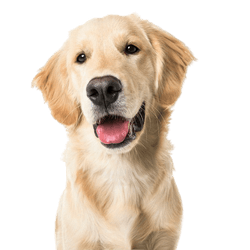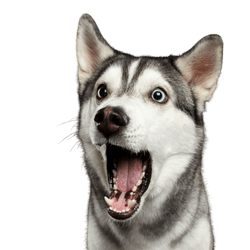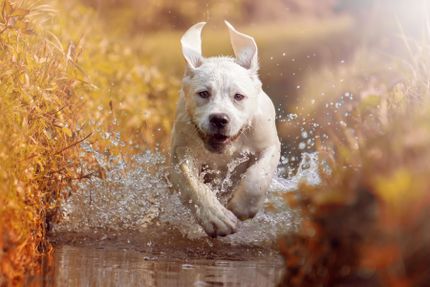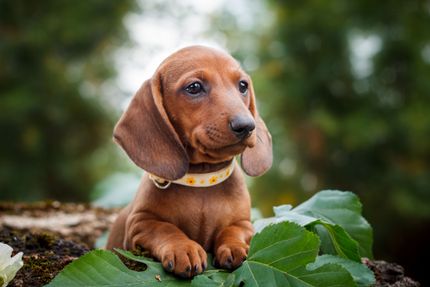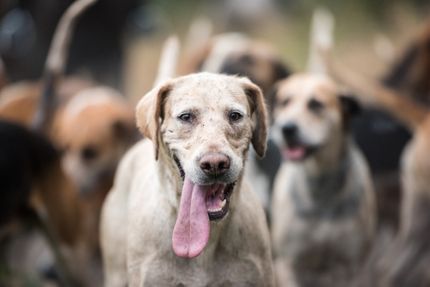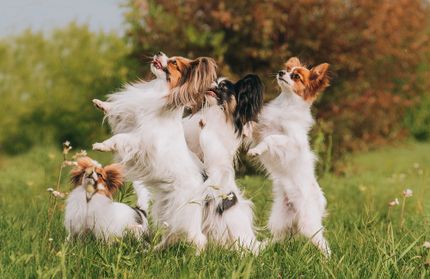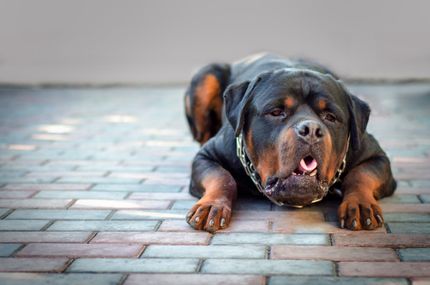Goberian:Golden Retriever and Siberian Husky Mix
Facts & Origin
Golden Retriever and Siberian Husky Mix - a hybrid breed.
This mixed breed is the best of both worlds. With the loyalty and obedience of the Golden Retriever and the independent nature of the Siberian Husky, you'll never get bored!
What are breed characteristics of this mix dog?
The Golden Retriever-Siberian Husky mix is a large dog with a height of about 65 cm and a weight of 30 kg. It has a dense coat that is typically a golden color and a bushy tail. This mixed breed is known for its loyalty and friendly nature.
| Alternate Name | - |
| Origin | UK - Russia |
| Life expectancy | 10 - 15 years |
| Care requirements | high-maintenance |
| Activity level | average - high |
| FCI group | not recognised |
| AKC group | not recognised |
| KC group | not recognised |
More Golden Retriever mixes
More Siberian Husky mixes
Attitude, character and temperament of the breed
Possible character traits of Golden Retriever and Siberian Husky Mix - Such is probably his nature.
Golden Retrievers are one of the most popular dog breeds in the United States. They are friendly, intelligent and make excellent family dogs. Siberian Huskies are also a popular breed known for their independent nature and striking appearance. So what happens when you mix the two?
You get a Golden Retriever-Siberian Husky mix, or "Goberian" for short. These dogs are a relatively new breed that has inherited the best traits of both parents. Goberians are friendly and playful like Golden Retrievers, but they are also independent and alert like Siberian Huskies.
But the Goberian is a good choice for families who want a dog that can keep up with their active lifestyle. Just be prepared for them to need a lot of exercise, as they have a lot of energy.
Character
Usage


Health and breeding information
What diseases can occur in Golden Retriever and Siberian Husky mix.
Golden Retrievers are one of America's most popular dog breeds, and for good reason. They are friendly, outgoing and intelligent, and make excellent family dogs. But like all dogs, Golden Retrievers are prone to certain health problems. Some of these health problems are common to all dogs, while others are specific to the Golden Retriever breed.
One of the most common health problems in Golden Retrievers is hip dysplasia. Hip dysplasia is a genetic condition of the hip joints. The joint is not formed properly and becomes more painful as the dog ages. This can eventually lead to arthritis and lameness. Hip dysplasia is more common in larger dog breeds, but can affect Golden Retrievers of any size.
Another common health problem in Golden Retrievers is elbow dysplasia. Like hip dysplasia, elbow dysplasia is a genetic condition that affects the elbow joint. The joint is not properly formed and becomes more painful as the dog ages. This can eventually lead to arthritis and lameness. Elbow dysplasia is more common in larger dog breeds, but can affect Golden Retrievers of any size.
Golden Retrievers are also prone to cancer. Cancer is the leading cause of death in Golden Retrievers, and the disease affects dogs of all ages. There are many different types of cancer that can affect Golden Retrievers, so it is important to know the signs and symptoms of the disease.
Heart disease is another common health problem in Golden Retrievers. The most common heart disease in Golden Retrievers is congenital heart disease, which is a problem with the heart that is present at birth. Golden Retrievers with congenital heart disease often have a heart murmur, an abnormal sound produced by the heart. Other signs of congenital heart disease include exercise intolerance, fainting and sudden death.
Golden retrievers are also prone to allergies. Allergies can be caused by anything from foods to pollen, and they can range from mild to severe. The most common symptom of allergies is itching, but rashes, vomiting, diarrhea, and breathing difficulties can also occur.
Golden Retrievers are prone to some health problems, but you can do a lot to keep the dog healthy and happy.
What does this mixed breed look like?
These dogs have a thick, fluffy coat that is usually white with some light brown or golden markings. They shed a lot of fur, so regular brushing is necessary.
| Fur length | medium |
| Fur | wavy - flat coated |
| Ear shape | Triangle - Standing Ears |
| Tail | fanned out |
| Anatomy | strong, rugged, strong, sporty |
| Size ♀ | 50 - 56 cm |
| Weight ♀ | 16 - 32 kg |
| Size ♂ | 54 - 61 cm |
| Weight ♂ | 20 - 34 kg |
| Suitable For | - |
Known Diseases
Elbow dysplasia (ED)
Elbow joint dysplasia is a chronic disease complex of the elbow joint of fast growing dog breeds.
Epilepsy
Definition: Dog has epilepsy if, for example, at least two epileptic seizures occur more than 24 hours apart.
Hip dysplasia (HD)
The hip dysplasia or hip joint dysplasia of the dog (HD) is a maldevelopment of the hip joint.
Cataract
Cataracts are still one of the most common causes of blindness, even in dogs.
Progressive Retinal Atrophy (PRA)
Progressive retinal atrophy (PRA) is a slowly progressive death of the retina in dogs.
Eye diseases
Often occur with allergies and intolerances.
Skin inflammations
Can be hereditary in certain breeds.
Useful Articles
You can find articles that might interest you in the dogbible blog to match your favorite breed.
Visit our magazineto stay up to date on dog trends.
To find out more, view our Privacy Policy
Find here the breed that suits you and find out what character traits it has. Here you can also learn more about the origin, size and weight of your favorite breeds.
Matching your favorite breed, you'll find articles that might interest you on the dogbible dog blog.
Stomach torsion in dogs - recognising signs and providing first aid when gastritis
Sedatives for dogs - alternative medicine and drugs
